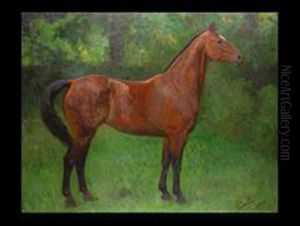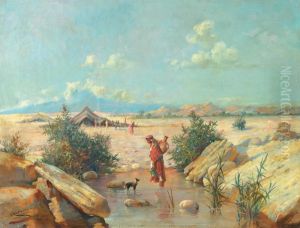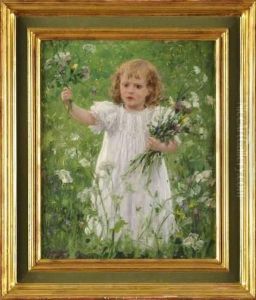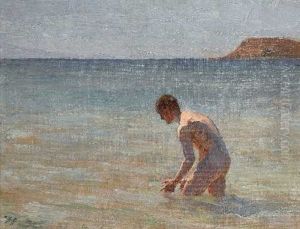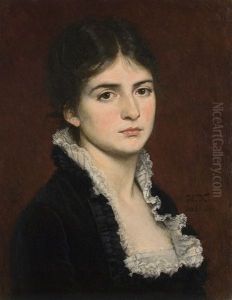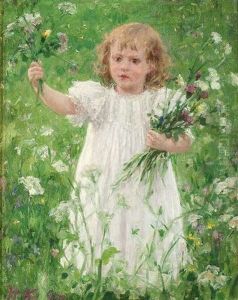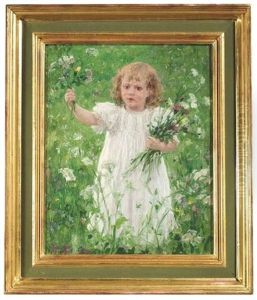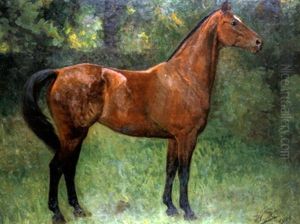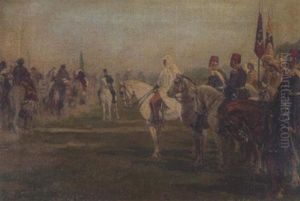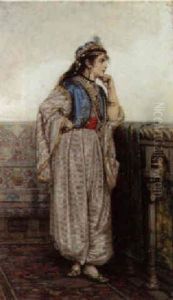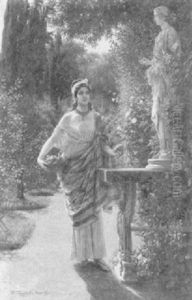Hermann Joseph Knackfuss Paintings
Hermann Joseph Knackfuss was a distinguished German painter, illustrator, and art historian, born in 1848 in Wissen, in the Rhineland, and passed away in 1915. His artistic and academic contributions spanned across the late 19th and early 20th centuries, a period marked by significant developments in European art, including the emergence of modernism. However, Knackfuss remained largely aligned with traditional academic art practices, focusing on historical and allegorical subjects, which were popular among the bourgeoisie and academic circles of his time.
Knackfuss studied at the Düsseldorf Academy, one of the premier art institutions in Germany, where he was influenced by the academic painting tradition, emphasizing technical skill, classical themes, and historical accuracy. His education laid the foundation for his career as an artist who excelled in creating meticulously detailed paintings, often imbued with historical and cultural significance. Beyond his achievements as a painter, Knackfuss was also a prolific illustrator and writer, contributing to the dissemination of art historical knowledge through his illustrated books and essays.
One of Knackfuss's most enduring contributions to the field of art history was his series of monographs on famous artists, which became essential reading for both scholars and art enthusiasts. These works were notable for their comprehensive analysis and accessible language, making the lives and works of great artists understandable to a broad audience. His ability to synthesize complex art historical information into engaging narratives demonstrated his dual talents as both a scholar and a storyteller.
Throughout his career, Knackfuss remained committed to the academic art tradition, even as the art world around him underwent radical changes with the advent of impressionism, post-impressionism, and other modernist movements. Despite the shifting artistic landscape, his work continued to be respected for its technical prowess and historical depth. His legacy is preserved not only through his paintings but also through his contributions to art historical literature, which continue to inform and inspire students of art history today.
Knackfuss's death in 1915 marked the end of an era for German academic art, but his influence persisted, particularly through his written works, which remained a valuable resource for understanding the evolution of Western art. His dedication to the craft of painting and the study of art history ensures that Hermann Joseph Knackfuss is remembered as a significant figure in the annals of 19th-century German art.
